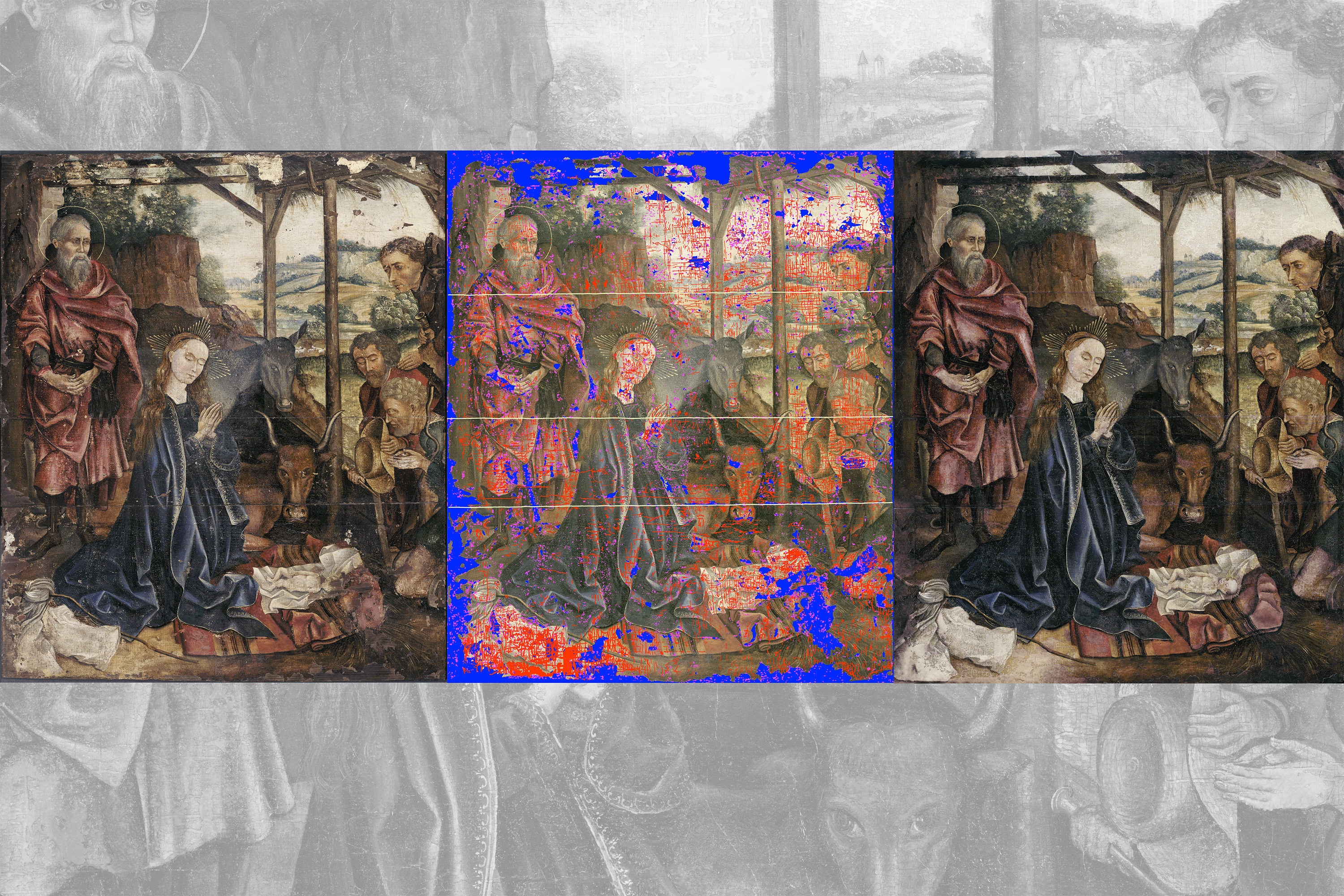Introduction to Art Restoration
Art restoration takes steady hands and a discerning eye. For centuries, conservators have restored paintings by identifying areas needing repair, then mixing an exact shade to fill in one area at a time. Often, a painting can have thousands of tiny regions requiring individual attention. Restoring a single painting can take anywhere from a few weeks to over a decade.
Digital Restoration Tools
In recent years, digital restoration tools have opened a route to creating virtual representations of original, restored works. These tools apply techniques of computer vision, image recognition, and color matching, to generate a “digitally restored” version of a painting relatively quickly.
Physical Application of Digital Restoration
Still, there has been no way to translate digital restorations directly onto an original work, until now. In a recent paper, Alex Kachkine, a mechanical engineering graduate student at MIT, presents a new method he’s developed to physically apply a digital restoration directly onto an original painting. The restoration is printed on a very thin polymer film, in the form of a mask that can be aligned and adhered to an original painting. It can also be easily removed.
Benefits of the New Method
Kachkine says that a digital file of the mask can be stored and referred to by future conservators, to see exactly what changes were made to restore the original painting. “Because there’s a digital record of what mask was used, in 100 years, the next time someone is working with this, they’ll have an extremely clear understanding of what was done to the painting,” Kachkine says. “And that’s never really been possible in conservation before.”
Demonstration of the Method
As a demonstration, he applied the method to a highly damaged 15th century oil painting. The method automatically identified 5,612 separate regions in need of repair, and filled in these regions using 57,314 different colors. The entire process, from start to finish, took 3.5 hours, which he estimates is about 66 times faster than traditional restoration methods.
Ethical Considerations
Kachkine acknowledges that, as with any restoration project, there are ethical issues to consider, in terms of whether a restored version is an appropriate representation of an artist’s original style and intent. Any application of his new method, he says, should be done in consultation with conservators with knowledge of a painting’s history and origins.
The Restoration Process
The new restoration process started as a side project. In 2021, as Kachkine made his way to MIT to start his PhD program in mechanical engineering, he drove up the East Coast and made a point to visit as many art galleries as he could along the way. He has been into art for a very long time now, since he was a kid, and restores paintings as a hobby, using traditional hand-painting techniques.
Digital Connections
As he toured galleries, he came to realize that the art on the walls is only a fraction of the works that galleries hold. Much of the art that galleries acquire is stored away because the works are aged or damaged, and take time to properly restore. Researchers have developed artificial intelligence algorithms that quickly comb through huge amounts of data. The algorithms learn connections within this visual data, which they apply to generate a digitally restored version of a particular painting, in a way that closely resembles the style of an artist or time period.
Align and Restore
For the new study, Kachkine developed a method to physically apply a digital restoration onto an original painting, using a 15th-century painting that he acquired when he first came to MIT. His new method involves first using traditional techniques to clean a painting and remove any past restoration efforts. He scanned the cleaned painting, including the many regions where paint had faded or cracked. He then used existing artificial intelligence algorithms to analyze the scan and create a virtual version of what the painting likely looked like in its original state.
Conclusion
The new method can be orders of magnitude faster than traditional, hand-painted approaches. If the method is adopted widely, Kachkine emphasizes that conservators should be involved at every step in the process, to ensure that the final work is in keeping with an artist’s style and intent. “It will take a lot of deliberation about the ethical challenges involved at every stage in this process to see how can this be applied in a way that’s most consistent with conservation principles,” he says.
FAQs
- Q: How long does the new restoration method take?
A: The entire process, from start to finish, took 3.5 hours, which is about 66 times faster than traditional restoration methods. - Q: Can the new method be used on any painting?
A: The method can be used on any painting, but it should be done in consultation with conservators with knowledge of a painting’s history and origins. - Q: Is the new method reversible?
A: Yes, the printed films are made from materials that can be easily dissolved with conservation-grade solutions, in case conservators need to reveal the original, damaged work. - Q: Can the digital file of the mask be stored and referred to by future conservators?
A: Yes, the digital file of the mask can be stored and referred to by future conservators, to see exactly what changes were made to restore the original painting.











